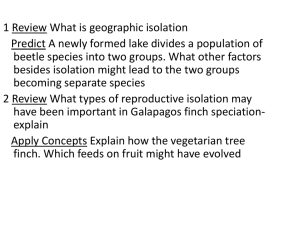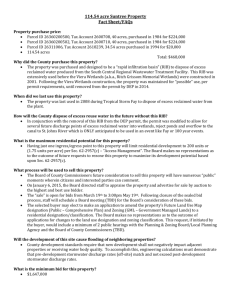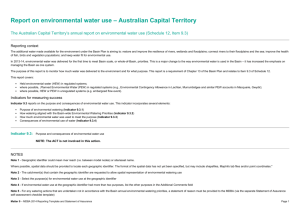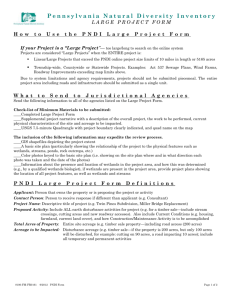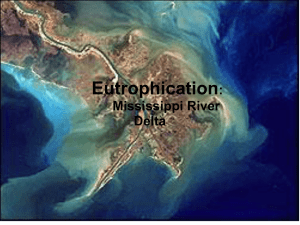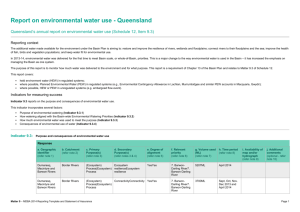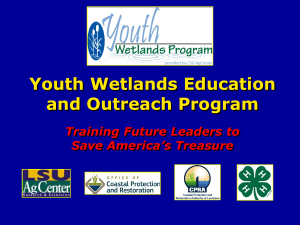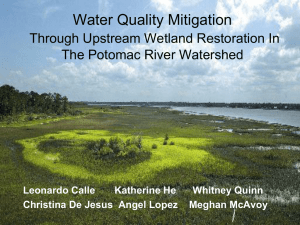Geographic Object Based Image Analysis (GeOBIA)
advertisement
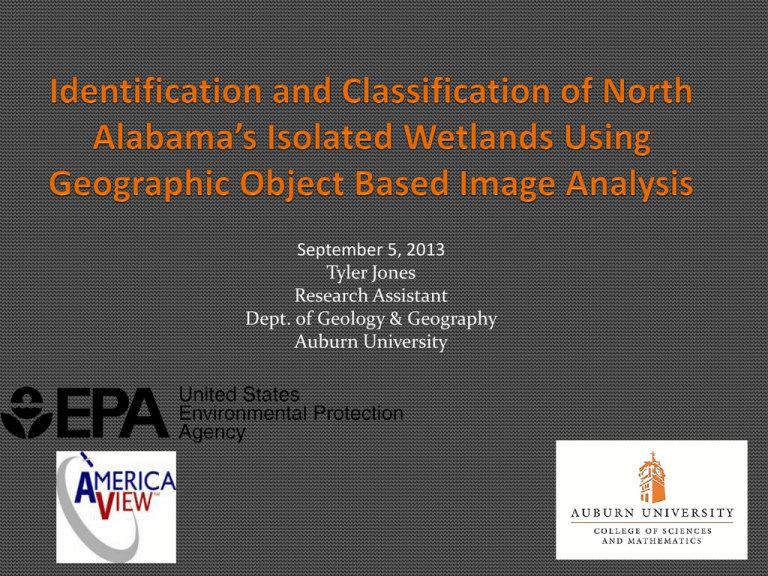
September 5, 2013 Tyler Jones Research Assistant Dept. of Geology & Geography Auburn University Isolated Wetlands by Ralph Tiner U.S. Fish & Wildlife National Wetland Coordinator Increased interest in recent years due to Supreme Court rulings There is no uniformly accepted definition of isolated wetlands With current data and technology the best approach uses geographic isolation for classification (Tiner, 2003) This project uses Tiner’s narrow interpretation of >40 meters from traditional non-isolated waterbodies Geographic Object-Based Image Analysis (GeOBIA) is a sub-discipline of GIScience devoted to partitioning remote sensing (RS) imagery into meaningful image-objects, and assessing their characteristics through spatial, spectral and temporal scale. Fundamentally consisting of image segmentation, attribution, and classification (Hay and Castilla, 2006). Segmentation Image Segmentation- process of partitioning a digital image into multiple segments (sets of pixels, also known as image primitives). The goal of segmentation is to simplify and/or change the representation of an image into meaningful image objects that are easier to analyze (Shapiro and Stockman, 2004). Classification Once created each image object can be identified and classified based on its attributes which the user can define. For Example: Spatial Extent Linearity Spectral Reflectance Relationship with Image Object Primitives Classification Example of classification using shape, size, texture, and height to classify buildings, trees, impervious surface and grass on the Auburn University campus. Differences from Traditional Raster Analysis Pixel based classification methods rely solely on the reflectance values of a given pixel Without creating meaningful image objects each with its own associated attributes these types of analysis are error prone GeOBIA allows for hierarchical relationship framework development that give successive levels of image objects an association Methodology Analysis Data: National Agricultural Imagery Program (NAIP) 1-meter spatial resolution (i.e. 1 pixel = 1meter2) 4-band spectral resolution (red, green, blue, near infrared) Imagery is flown during the 2011 growing season so vegetation will appear “leaf on”. Repeated every 3 years Methodology Analysis Data: Soil Survey Geographic Dataset (SSURGO) vector dataset with attributed soil characteristics among other types of soil this dataset contains location of all known hydric soils created by NRCS soil scientists conducting soil surveys Methodology Isolation Data: The National Hydrography Dataset (NHD) vector dataset delineating traditional waters such as lakes, rivers, and streams built and maintained by the U.S. Geological Survey Methodology Isolation Data: Federal Emergency Management Agency’s (FEMA) Digital Flood Rate Insurance Map (DFIRM) vector dataset depicting various hydrological models specifically the Special Flood Hazard Areas (commonly known as the “100 year floodplain”) Methods Executed using custom algorithms in eCognition Server with parallel processing Developing decision-tree rulesets Tiling and stitching 714 NAIP DOQQs into 5,712 individual projects Iterative segmentations creating and shaping meaningful objects Classification based on user defined thresholds. Measured for geographic isolation to traditional waters Verification (remote and field) to determine accuracy Study Area Area of Alabama falling north of the 34th parallel Includes all or a portion of 17 Alabama counties Geographic Isolation Geographic Isolation Geographic Isolation Remote Verification 191 areas identified as geographically isolated were randomly selected and manually inspected using aerial imagery Results showed an overall accuracy of 83.7 percent Errors included rooftops, shadows, and pavement Field Verification Field verification was also used to assess accuracy of classification 57 sites were inspected and marked using TopCon GRS-1 DGPS Overall accuracy of 87.7% Overall Results A total of 26,461 areas were identified as geographically isolated wetlands with an overall extent of 49,139.5 acres Average wetland size: 1.859 acres County with highest number of wetlands: Cullman (4,400) County with lowest number of wetlands: Cherokee (355) County with most acreage of wetlands: Lawrence 12,668 acres County with least acreage of wetlands: Cherokee 346 acres Future Work This project’s methodology are being extended to the rest of the state of Alabama This should mean a reduction in pre-processing and methodology construction and increase overall efficiency As physiography changes does this effect the accuracy of these algorithms Future wetland mapping projects using GeOBIA should investigate incorporating airborne LiDAR to increase accuracy Questions? Contact Information: Tyler W. Jones 2194A Haley Center Auburn University, AL jonest3@auburn.edu.
